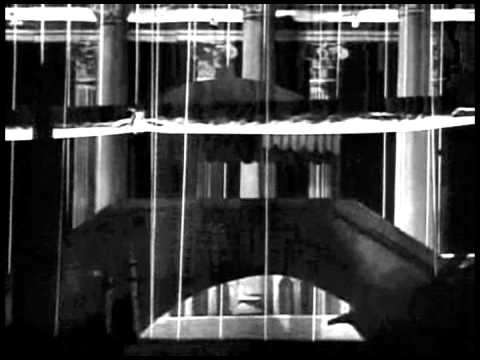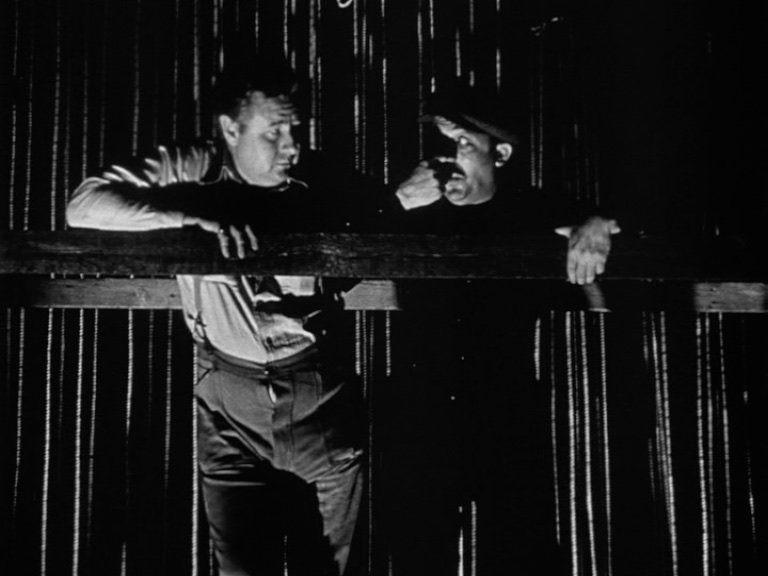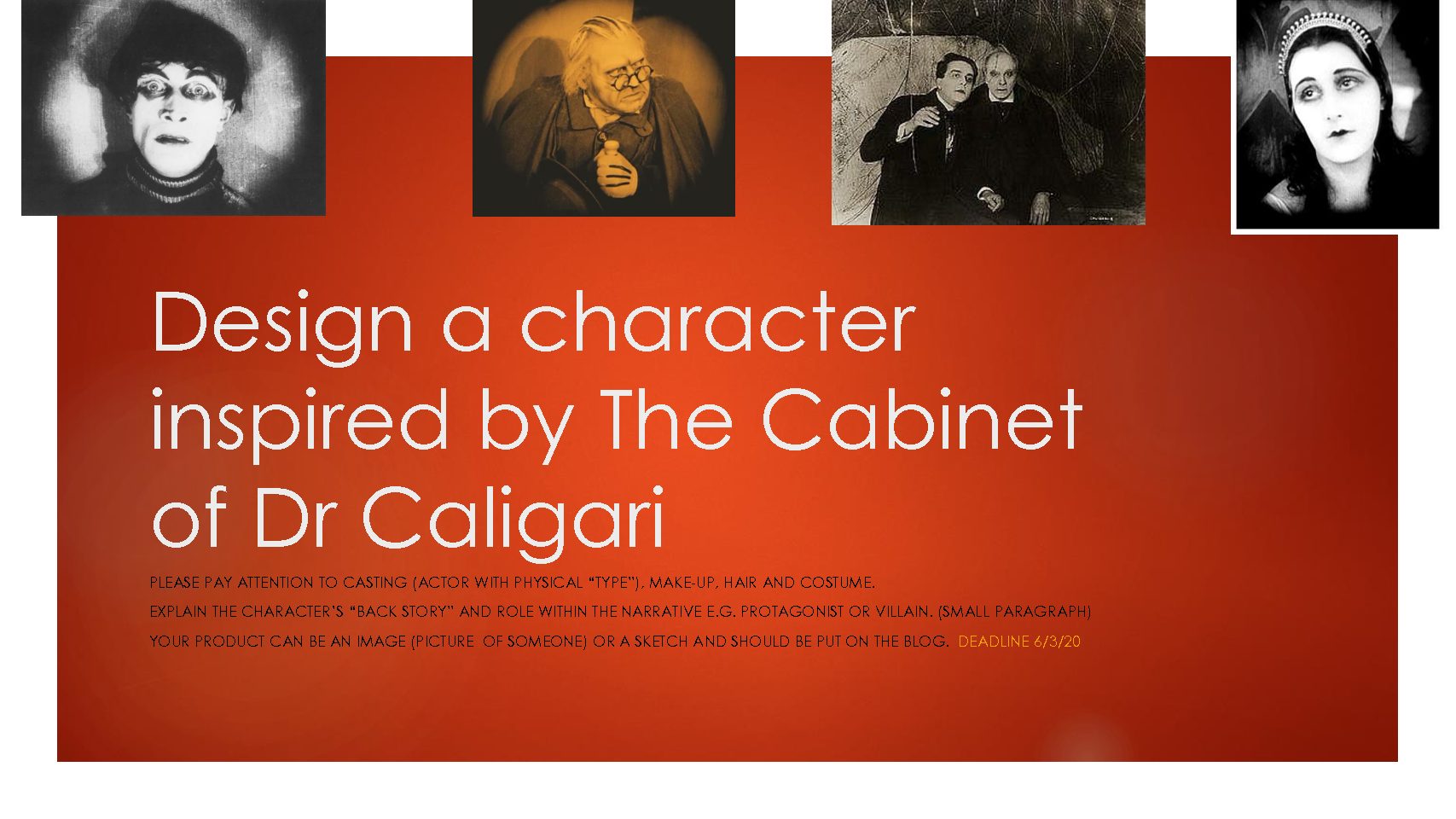
Monthly Archives: February 2020
Filters

The cabinet of DR CALIGARI
CITIZEN KANE
Which technique(s) being used: Framed Subject, Deep Focus and Extreme Low Shot
Where (location) we are shooting: School Hall
Who (subject) we are shooting: Ollie H, Bradley and myself
What specific meaning we are trying to achieve in relation to storytelling: The Extreme Low shot was to try show that the actor thinks he has power and is doing really well in his audition (similar to Susan and her opera career). The Framed shots were to show how the actor really looked like to judges and show the authority they had over the young actors career which is also emphasised by the actor being very far away from them (Deep Focus).
For our project we set out to create a scene using the deep focus and framed shots that were used in citizen kane. We decided to use the hall as it was the biggest and best place to get the shots we were aiming for. I feel like we were successful in gaining the deep focus and framed shots but trying to get the right angle in these shots was quite difficult as we had to balance the camera on various different books and other items. as we didn’t have a tripod, when we were filming the first scene it ended up being shaky from having the camera being handheld. We also struggled to get the correct lighting for our scene as we weren’t allowed to use the spot light tech for the stage because none of use knew how to use it so, we worked with the two main lights that was in the hall.
Citizen Kane – Favourite scene
My favourite scene from the film, Citizen Kane (1941) is the scene where the reporter, Jerry Thompson, goes to the bank and read the archives of the late banker, Walter Parks Thatcher to learn more about Charles Foster Kane. Throughout the whole film, Gregg Toland (the cinematographer of Citizen Kane), uses deep focus which was revolutionary at the time as the use of this film technique implied to the viewer that they could analysis every detail in the shot, and as a result, this could drive the plot and could give a clearer explanation towards the meaning of the film.

Why I find this the best scene in the film was mostly because of the use of excellent cinematography and lighting. What makes the lighting so significant to the success of the film was the use of shadow; the back-lit subject technique made the characters look like they were not important and in fact they were made to look inferior to the light that was shining down upon to table. The large beam of light, which makes the table and especially the book, the focal point of the scene can resemble the presence of a superior being, such as a deity, that is watching over the actions of the figures and what the reporter, Jerry Thompson, will be doing once he reads the files of the banker. Not only does the director, Orson Welles, conceal identities with shadow but he also makes the protagonist or any character the focal point of the scene. Long takes were a key element in this film, especially during this scene, where composition of the film draws to the middle of the set; the table in the archive room. This implies that the cinematographer of the film wants the audience to focus on this exact position in the scene, as composition is key in attracting the viewer’s attention.
What’s also important are the micro elements in this scene; where the mise-en-scene plays a key role in shaping the mood of the surroundings. For instance, the bank archives seem vast, but equally baron and cold, as there is little to no furniture except for the table which shows that the room makes the viewer feel anxious or intimidated because the reporter is only in the room for a limited amount of time – otherwise we assume he might face serious consequences (as the guards are clearly shown to enforce rules that are broken). But why the film is in black and white is quite interesting, as Orson Welles wanted to show Citizen Kane in this medium because some things which are shown in colour can’t be achieved without the use of black and white, and a key example of this is the obvious ray of light in the archive scene which could be used deliberately to avert our attention from the surroundings in the room.
What makes Citizen Kane one of the Greatest Films of All Time?
Citizen Kane follows the man of Charles Kane throughout his life from childhood to death as he rises to and falls from power. All aspects make this film a masterpiece and work together to create an amazing step in cinema where the revolutionary ideas of the time, now seem common in all films.
Gregg Toland’s cinematography was revolutionary from its time and still holds up today. Citizen’s Kanes use of deep focus was rarely seen in film before that point and combining with the composition of each scene meant that the viewer could read and analysis the whole frame which enhanced the plot with each layer adding different meaning depth.
For example, in this famous shot, the foreground is taken up by Kane’s mother and Mr. Thatcher who organize the paperwork that determine Charles Kane’s future. In the mid distance, Kane’s father trying to keep his son and giving in to his greed to accept the money. The background contains Kane playing in the snowy background and being a child, which is purposely about to be taken away from him. All these actions and ideas are portrayed in one still shot and is much more effective then different shots. This is all due to the revolutionary use of deep focus as well as mastery of directing and framing of characters that is rare in many films today.
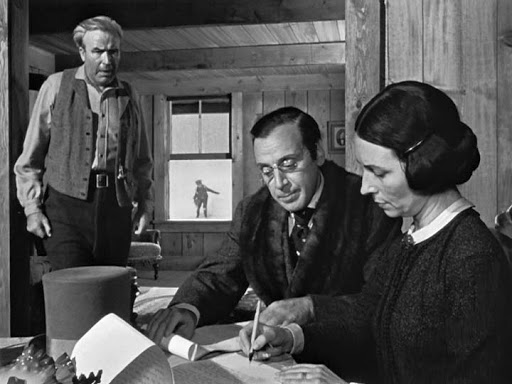
Other aspects of cinematography included Back-lit Subjects and chiaroscuro lighting (lifted from painting to give a grander feel) is used to highlight certain characters as well as their emotional states which influenced film noir. The use of extreme low angle shots (although not new) were added to reveal more of a scene such as ceilings to feel claustrophobic and grounded, as well as to emphasize power dynamics in relationships such as Kane being the largest on screen as he takes power from his friend (mid-ground and smaller) by firing him.
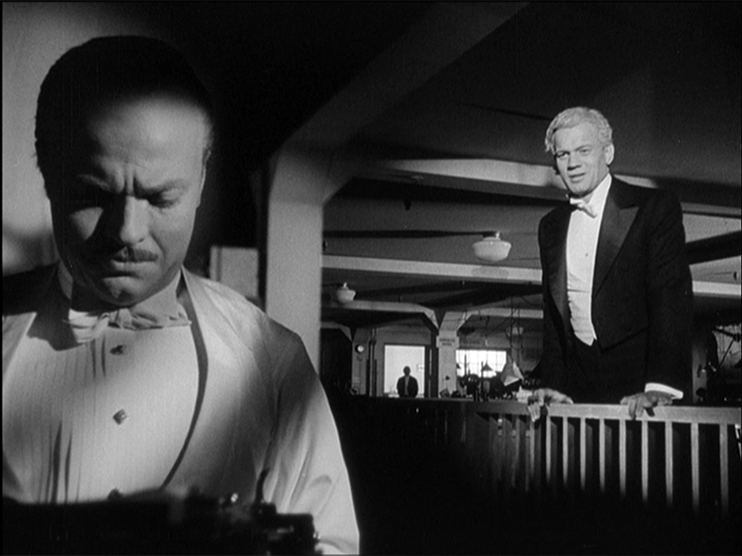
Although the cinematography is probably the most amazing part of Citizen Kane, the editing and special effects add to the masterpiece. This is done by using techniques that are even hard to pick up on today such as the large audience during his political speech being fake and only just a still photograph with holes poked in to create an illusion. Also, during Susan Kane’s first opera performance instead of cutting to see the disgusted people’s reactions, Welles uses fluid editing to not break the flow of the scene.
The narrative and actors must not be forgotten as Welles is able to play from an optimistic young man to an old drained hermit (able by great makeup). The ambivalence of the story separated it from other films as it’s about a very successful man while portraying the tone of failure through the film and many themes like these continue as he tries to stand up for the poor but we see his ideals being compromised. Citizen Kane doesn’t try to direct the audience’s feelings and give the facts of his life while creating complex accounts from those who knew him. This complexity is still rare for many films
Favourite Scene in Citizen Kane
My favourite scene is that of when his second wife (Susan) has left him near the end of the film. This is when Kane is reminded of what Rosebud is. Although this is important as it is what the whole plot has been building to throughout the film. For me this scene is great as it shows a man who has been very successful and had an eventful life while still losing everything. It shows a realist man who has a break down after his wife leaves and breaks the room, having to finally deal with the consequences of his actions. The direction is very clever in this scene as Welles does all the movement with the camera only panning left and right while he destroys the room. This is great cinematography as it feels as if the camera has given up on Kane, just like the rest of the characters. This is further reinforced with the sound as the only sound in this scene is that of breaking objects as it gets torn apart without any backing underscore.
The second part of the scene is him leaving the room and walking out of Xanadu. The mise-en-scene of this scene is amazing due to the interior of his mansion. This emphasizes the fact that Kane has all this wealth and so backs up the fact that him being successful, doesn’t make him happy. Gregg Toland’s cinematography is extraordinary in the scene as most notable the infinite mirrors after he leaves the room that shows his infinite reflection. This metaphor could represent Kane’s self-absorbed narcissism and how his wealth has only brought him loneliness. Although there is all this wealth in his mansion of Xanadu, all he is surrounded by is himself and his repeated image of all the mistakes he has made.
Kane project overview
When filming our backlit scene we thought that everything would look perfect as from what we could see it was. Once we had taken it back to the classroom and uploaded it into premiere pro we noticed some things that definitely needed to be changed.
The first thing we noticed is that the backlight wasn’t creating a harsh enough shadow on Ebony so to enhance the shadow we moved the lighting round until it was perfect.
The second thing we noticed was that when Torin slammed his hand down on the table it was done too fast and didn’t quite fit with the small amount of dialogue that we had, so when re-filming we just timed this motion at a more suitable time.
I thought that the final result after the second shoot that we did was exactly what we envisioned and that it portrayed exactly what we wanted it to.
Film making intentions – citiZen kane
Shooting Plan:
What technique did we use – Chiarascuro Lighting and Backlit Subjects.
Where We Are Shooting – In the media studio.
Who We Are Shooting – We are shooting Torin’s hand and Ebony’s document.
What Specific Meaning We Are Trying To Achieve In Relation To Storytelling – we tried to portray a secret document being handed between two anonymous characters. We used the backlit lighting to make harsh shadows and outline of Ebony to show her as a main character.
Reflection – Citizen Kane
I think that the project went well as we achieved the techniques we set out to do as well as having quite a Citizen Kane feel. This was done through turning the project black and white to emphasise the light and give a tone closer to the film. The framing and extreme low angle shots went well as it was clear which technique was which. However although the deep focus worked, we struggled to get it working and also we were not able to change the lights to what we wanted (spotlight on the actor on the stage). Also, I had to raise the volume of the actor (me) in the editing phase as in the second shot, there was great distance between the camera and actor so it was very quiet as first however that was easily fixed in Premiere.
Film makers Intentions – Citizen Kane
Which technique(s) being used:
Deep Focus
Framed Subjects
Extreme High and Low Angle Shots
Where (location) we are shooting:
The Hall
Who (subject) we are shooting
Bradley, Cat and I
What specific meaning we are trying to achieve in relation to storytelling
The extreme low angle shot shows her loss of control in not getting the job as actor. Also, the framing of them between the director’s shoulders shows that their future and career relies on their choice. The deep focus emphasises this by keeping focus on the actor while also the directors opinions when they turn around.

